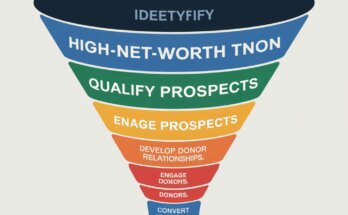So, you’ve got a fantastic nonprofit idea that’s ready to take off, but you’re wondering how to get the funding you need. Approaching small businesses for sponsorships might just be the solution you’re looking for.
In this post, we’ll dive into practical strategies to help you connect with local companies and build partnerships that benefit everyone involved.
Understand What Small Businesses Want
Before you reach out, it’s crucial to understand what small businesses are looking for in a sponsorship. They often seek opportunities that can increase their brand visibility, connect them with new customers, and enhance their reputation in the community.
Example: Imagine a local bakery that’s eager to attract more families. If your nonprofit hosts events for kids, partnering with them could offer the bakery exposure to their target audience.
1.Research Potential Sponsors
Not every small business will be the right fit. Spend time researching companies that align with your nonprofit’s mission and values.
- Local relevance: Focus on businesses in your community.
- Shared values: Look for companies that support causes similar to yours.
- Past sponsorships: Check if they’ve sponsored events or organizations before.
Example: If your nonprofit focuses on environmental conservation, a local eco-friendly store might be more inclined to sponsor you.
2. Craft a Compelling Proposal
Your sponsorship proposal is your chance to make a strong first impression. It should clearly outline what you’re asking for and what the business will gain in return.
- Introduction: Briefly explain your nonprofit’s mission.
- The ask: Specify what kind of support you’re seeking.
- Benefits: Highlight how the sponsorship will benefit the business.
Example: “By sponsoring our community garden project, your business will be featured on all promotional materials, reaching over 5,000 local residents.”
3. Build a Personal Connection
Small businesses value relationships. Instead of sending a cold email, try to build a personal connection.
- Visit in person: Drop by their office or store.
- Attend networking events: Meet business owners in community gatherings.
- Use mutual contacts: Get introduced through someone you both know.
Let me tell you about Sarah, who runs a small animal shelter. She wanted to host a pet adoption fair but lacked funds. Instead of sending out mass emails, she visited local pet stores and personally talked to the owners.
One shop owner, impressed by her dedication, agreed to sponsor the event. Not only did Sarah secure funding, but she also built a lasting partnership that benefited both the shelter and the pet store.
4. Offer Value, Not Just an Ask
Remember, a sponsorship is a two-way street. Think about what you can offer the business.
- Marketing opportunities: Feature them in your newsletters or social media.
- Event participation: Give them a chance to speak or present at your events.
- Community goodwill: Associate them with a positive cause.
Example: “In return for your support, we’ll include your logo on our event banners and offer you a booth to showcase your products.”
5. Be Prepared for Negotiations
Businesses might have counter-offers or suggestions. Be open to discussions and flexible in your arrangements.
- Listen actively: Understand their concerns and needs.
- Find common ground: Look for win-win solutions.
- Be professional: Maintain a courteous and respectful tone.
6. Follow Up and Show Appreciation
After securing a sponsorship, keep the relationship strong.
- Regular updates: Inform them about the impact of their contribution.
- Thank you notes: Send a personalized thank you letter.
- Public recognition: Acknowledge them publicly at events or on social media.
Example: Post-event, share photos and tag the business, thanking them for their support.
7. Leverage Social Proof
Share stories of other businesses that have successfully partnered with you. This builds credibility and shows potential sponsors the benefits.
Example: “Last year, our partnership with XYZ Coffee Shop helped increase their customer footfall by 20% during our event week.”
8. Be Authentic and Passionate
Your genuine passion can be infectious. Businesses are more likely to support organizations that show real commitment to their cause.
- Share your story: Let them know why your mission matters.
- Show impact: Provide evidence of your nonprofit’s effectiveness.
9. Don’t Get Discouraged
Rejection is part of the process. If a business declines, thank them for their time and consider reaching out in the future.
- Ask for feedback: Understand their reasons to improve your approach.
- Keep building relationships: Stay connected for potential future opportunities.
Conclusion:
Approaching small businesses for sponsorships doesn’t have to be intimidating.
Ready to take your nonprofit to the next level?
Subscribe to the Nonprofit Navigators Newsletter for more expert tips and resources. Get exclusive access to opportunities like job listings, grant applications, webinars, events, and more!
And to make your sponsorship journey even smoother, don’t forget to grab our Corporate Sponsorship Proposal Template. It’s designed to help you craft proposals that win over businesses and secure the support you need.




